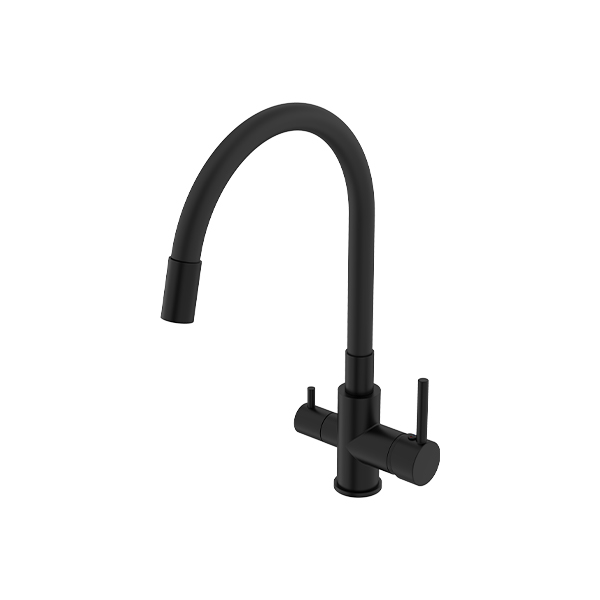Supply Pull-Out Kitchen Mixer Taps Exporter Maker Producer
Pull-out kitchen mixer taps are a popular choice in modern kitchens due to their versatility, functionality, and sleek design. These taps are often equipped with a flexible hose that can be pulled out from the main body, allowing users to easily rinse dishes, wash vegetables, or clean the sink with increased mobility. However, the effectiveness and longevity of a pull-out kitchen mixer tap heavily depend not only on its design but also on the surface treatment technology used during manufacturing. The right surface treatment enhances the tap’s durability, resistance to corrosion, ease of maintenance, and aesthetic appeal.

1. Electroplating: Enhancing Corrosion Resistance and Aesthetic Appeal
One of the commonly used surface treatment technologies for pull-out kitchen mixer taps is electroplating. Electroplating involves the process of applying a thin layer of metal (usually chrome or nickel) to the surface of the tap through an electrochemical process. This is achieved by immersing the tap in a solution containing metal salts, which are then transferred to the surface of the tap when an electric current is applied.
The primary benefit of electroplating is its ability to provide a high-quality finish that is not only visually appealing but also highly resistant to corrosion. This is especially important in a kitchen setting, where the tap is regularly exposed to water, food particles, and cleaning agents that could cause rust or tarnishing over time. Chrome electroplating, in particular, is popular due to its shiny, reflective surface that gives the tap a modern and sleek look.
In addition to its aesthetic benefits, electroplating enhances the surface’s durability, reducing the likelihood of scratches or wear caused by regular use. A well-executed electroplated finish will retain its appearance and functionality for many years, even with frequent exposure to harsh kitchen conditions.
2. PVD Coating: Superior Durability and Scratch Resistance
Physical Vapor Deposition (PVD) is a surface treatment technique that has become increasingly popular in the production of high-end kitchen mixer taps. Unlike electroplating, which involves the application of metal through an electrochemical process, PVD uses vaporized metals and alloys to create a thin, durable coating on the surface of the tap.
PVD coatings offer several advantages over traditional electroplating. One of the notable benefits is their scratch resistance. Kitchen taps are subjected to a range of stresses, from the force of water flow to direct contact with utensils and cleaning tools. PVD-coated taps are highly resistant to scratches, ensuring that the surface remains smooth and visually appealing even after prolonged use.
Furthermore, PVD coatings are more environmentally friendly than electroplating, as they do not require the use of hazardous chemicals. PVD coatings are also known for their high resistance to corrosion, tarnishing, and fading, making them an ideal choice for kitchen taps that need to withstand moisture, oils, and food residues. PVD-treated taps are often available in a range of finishes, including matte black, brushed gold, and satin nickel, providing additional design options to suit modern kitchen aesthetics.
3. Ceramic Coating: Non-Stick and Easy to Clean
Ceramic coatings are increasingly being used in kitchen taps due to their unique properties, such as non-stick and easy-to-clean surfaces. The ceramic coating is typically applied to the tap through a process known as sol-gel or spray coating, where a fine layer of ceramic material is bonded to the surface of the tap.

 English
English Español
Español

